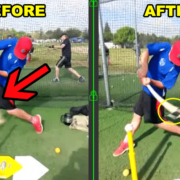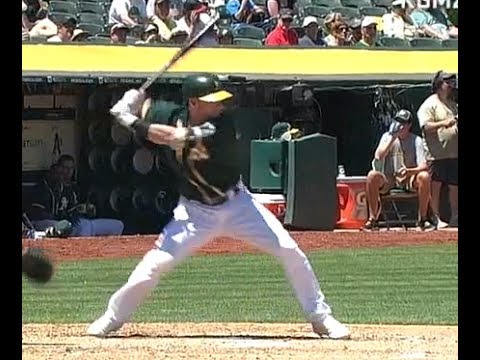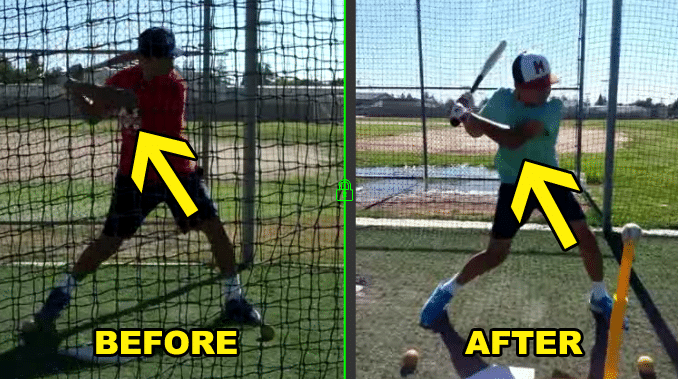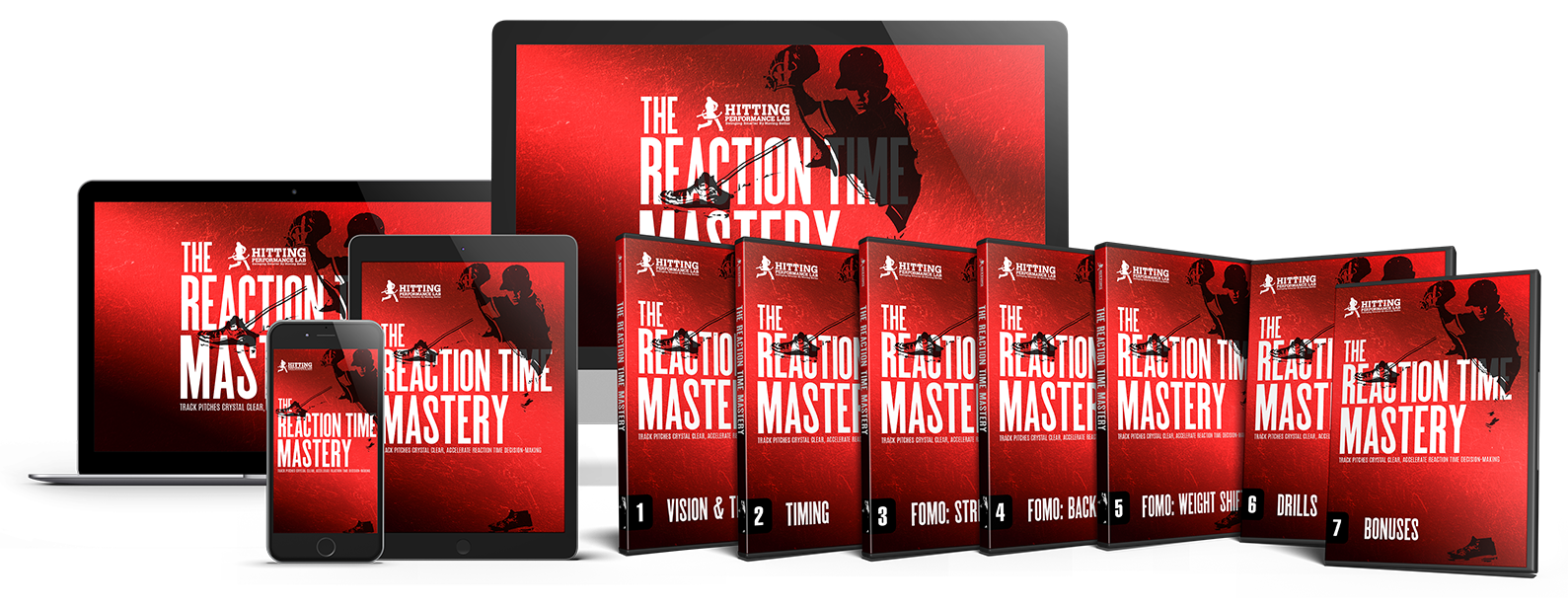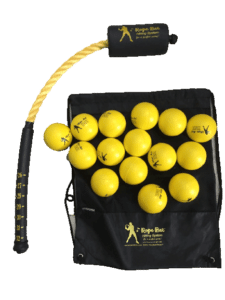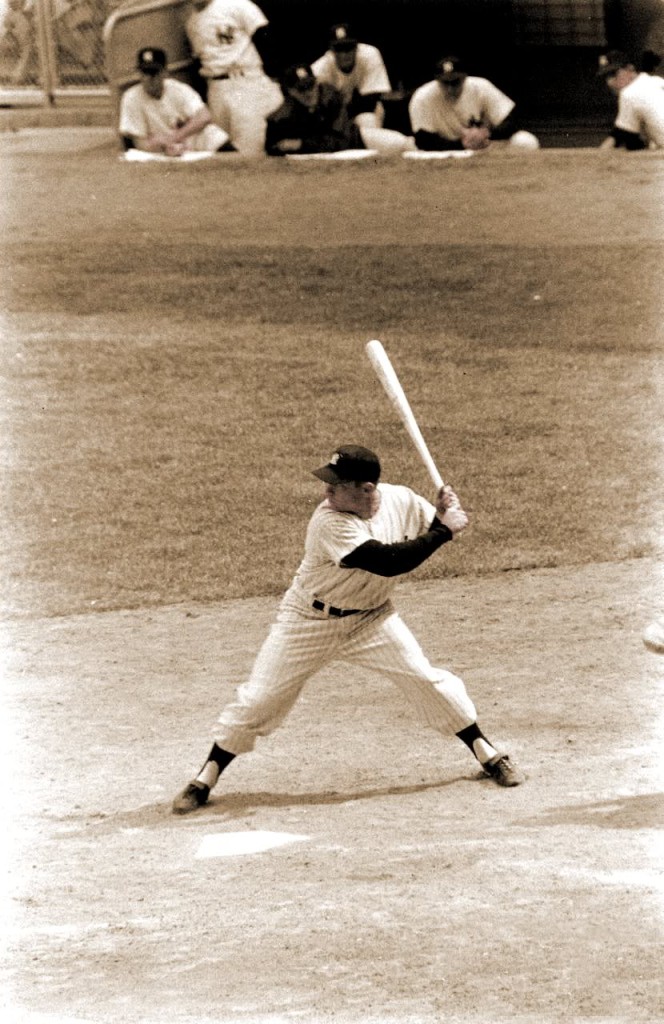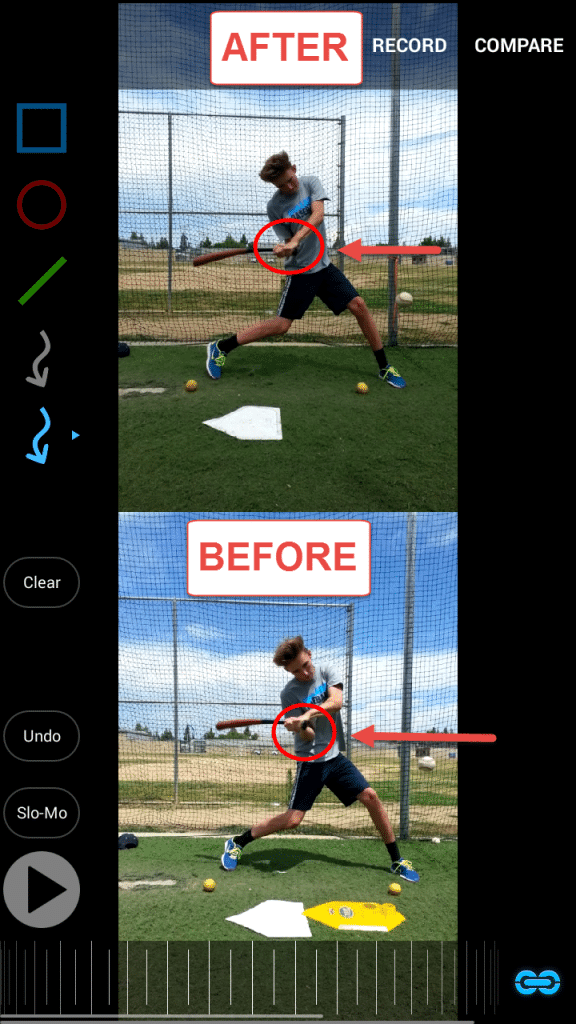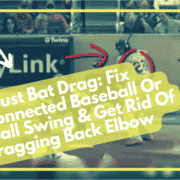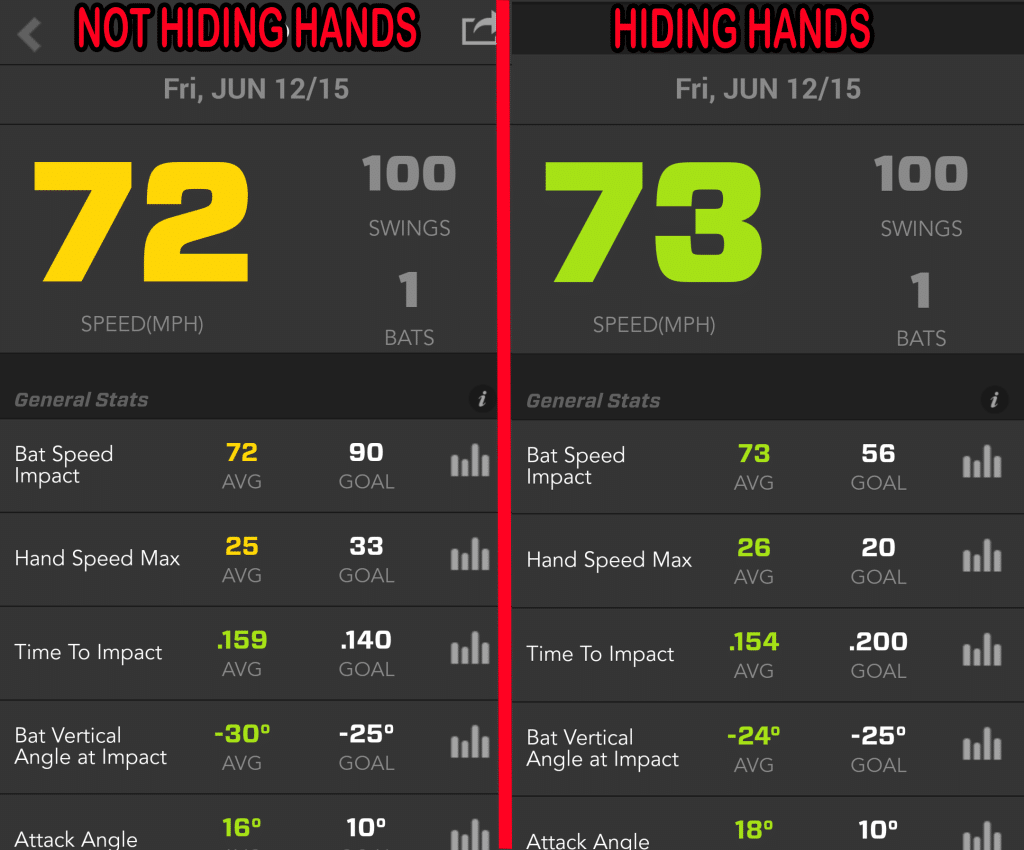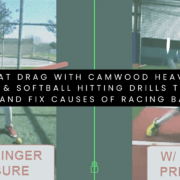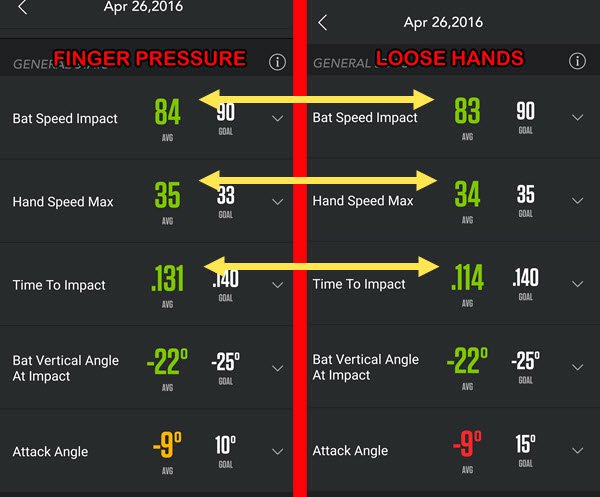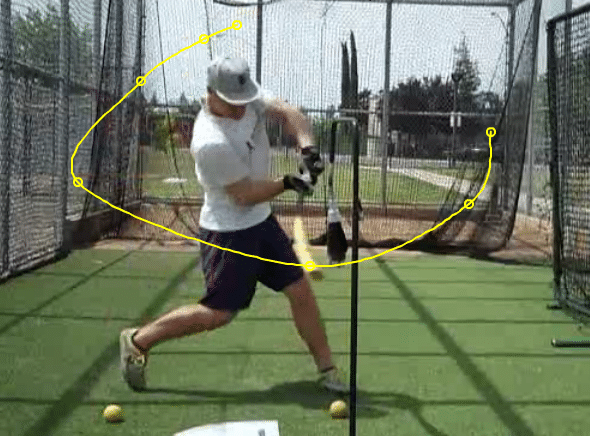Bust bat drag with Camwood heavy bat? Simple baseball and softball hitting mechanical drill to help get rid of, cure, and fix causes of racing back elbow. I probably wouldn’t look to fixing bat drag with a heavy bat like Camwood in the beginning. It’s mainly caused by a mechanical and over-rotation issue.
Baseball Hitting Drills For Little League: How To Fix Bat Drag In 2-Weeks [Swing Experiment]

Look at my 11u hitter Jace’s racing back elbow, and the fix a week later. On the left side, he weighed in at 68-lbs, and right before our session, hit his first official homer distancing 180-feet!
Question: Does ‘Top Hand Finger Pressure’ Effect Bat & Hand Speed, and Time To Impact versus Keeping the Hands Loose? (Pre-Turn Hand Tension Revisited)
Using the Zepp (Labs) Baseball app , I wanted to use the Scientific Method to revisit a past experiment I did titled “Babe Ruth Reveals Hand Tension?” And analyze whether having relaxed hands OR ‘finger pressure’ affects Zepp metrics.
, I wanted to use the Scientific Method to revisit a past experiment I did titled “Babe Ruth Reveals Hand Tension?” And analyze whether having relaxed hands OR ‘finger pressure’ affects Zepp metrics.
Growing up, I was taught baseball hitting drills for Little League – which are still being taught, that loose hands are quick hands. Modern research REVEALS that may not be the WHOLE story.
I wanted to revisit the previous ‘Babe Ruth experiment’ because in that test, I wasn’t actively holding the finger pressure through impact. In this experiment, I will be.
In the Conclusion of this post, I’ll also give a couple examples of my hitters who were suffering from really stubborn bat drag (one for over 1.5 years), and how we used ‘finger pressure’ to correct it within 1-2 weeks.
SCIENCE-BASED TRAINING:
Improve your hitting strategy dramatically by applying human movement principles.
Learn not only how and what to train but also the science behind the methods.
Background Research
In the Babe Ruth Pre-Turn Hand Tension Zepp swing experiment, I used the following Research links:
- Pavel Tsatsouline Tim Ferriss podcast revealing how the hands can be used to recruit more muscle tissue and connect larger areas of the body,
- Homer Kelly’s book The Golfing Machine
 went into describing one of the four power accumulators in the golf swing, and
went into describing one of the four power accumulators in the golf swing, and
- Thomas Myers’s book Anatomy Trains
 , and how Front Arm Fascial Lines are responsible for connecting what an explosive rotational athlete is holding in their hand(s), with the other springy fascial lines inter-weaving throughout the rest of the torso and body.
, and how Front Arm Fascial Lines are responsible for connecting what an explosive rotational athlete is holding in their hand(s), with the other springy fascial lines inter-weaving throughout the rest of the torso and body.
I also wanted to point out that a few months after publishing the ‘Babe Ruth Pre-Turn Hand Tension’ experiment I met Lee Comeaux, now a good friend of mine, who is a professional golf instructor out in Texas. He’s been studying Thomas Myers’s book Anatomy Trains for over a decade now.
for over a decade now.
He simplifies the concept we now call top hand finger pressure. So THANK YOU Lee! CLICK HERE to visit Lee’s (Roy) YouTube channel. And by the way, Lee has a 13u daughter playing fastpitch softball in Texas, and last time I heard she was hitting .800 using the same principles we talk about here.
So yes, this works for both fastpitch and baseball hitters!
Please watch the following interview with Thomas Myers titled, “Tensegrity Applied To Human Biomechanics”:
- Defining tension & compression Forces (0:10)
- Applying tension to the structure makes it stronger and more stable (5:55)
- Applying tensegrity to the human body and tightening up as a benefit to taking on impact (12:35)
I’ve also heard Thomas Myers talk about synovial fluid in our joints. It’s our lubrication system. And it’s liquid, between the joints, when we’re relaxed…in the above video, he called this “adaptability”.
However, when we catch a ball in a glove, for instance, we squeeze our hand around the ball turning the synovial fluid to a solid state. This concept becomes important when we’re talking about ‘finger pressure’ when hitting.
I tell my hitters it’s the difference between the ball feeling like it’s hitting a cinder block (the bat), or a wet pool noodle.
'Add 40-Feet' To Batted Ball Distance
Swing Study reveals how tens of thousands of hitters are adding 40-feet to batted ball distance by using one simple strategy.
Click the button below to access the FREE video that's been downloaded over 30K times!!
Click here to 'Get Instant Access'
Hypothesis

This is my Sophomore in H.S. Zack and his racing back elbow BEFORE & AFTER. This was a 1 week fix employing ‘finger pressure’.
I’m a little biased in this experiment because I’ve seen the research AND how this has worked miracles with my own hitters employing ‘top hand finger pressure’. However, I wanted to conduct another formal experiment comparing the following Zepp metrics:
- Bat Speed at Impact,
- Hand Speed Max,
- Time To Impact,
- Barrel Vertical Angle at Impact, and
- Attack Angle…
…between the two swings. Whereas the aforementioned ‘Babe Ruth Pre-Turn Hand Tension‘ experiment I held the hand tension before the turn, then let it go. This experiment I’ll be keeping top hand finger pressure from the moment I pick up my front foot to stride, to all the way through impact.
I predict, by using ‘top hand finger pressure’ longer, we’ll see an effective jump in all metrics rather than the conventional of ‘loose hands are fast hands’. I also predict holding finger pressure longer will be more effective than the previously mentioned experiment metrics for Pre-Turn Hand Tension.
At the end, I’ll show how ‘finger pressure’ has STOPPED bat drag in two of my hitters at the Conclusion of the experiment.
Baseball Hitting Drills For Little League: ‘Finger Pressure’ Experiment
Equipment Used:
Setup:
- We used the Zepp Labs Baseball app to gain swing data.
- I stayed as consistent as I could with keeping the ball height and depth the same for most swings.
- I used two yellow dimple ball markers to make my stance setup consistent…one was placed inside my back foot, close to the plate. The other was placed one bat’s length plus two baseballs in front of the back marker.
- The two tests in the baseball hitting drills for Little League ‘finger pressure’ experiment were counter-balanced. Which consisted of eight blocks of 25-swings done in the following order ABBA BAAB. ‘Finger pressure’ was letter ‘A’, and ‘loose hands’ was letter ‘B’. 200 total swings were completed in the experiment, 100 per test. Counter-balancing helps remove the “getting tired” and “not being sufficiently warmed up” factors.
- On the finger pressure swings, I used top hand bottom three finger pressure only, which consisted of tightening up the top hand bottom three fingers (pinky, ring, & middle) from the time I picked my stride foot up, to all the way through impact. The bottom hand was doing what I call the ‘butterfly grip’…tight enough to keep a butterfly from getting away but not too tight to crush it.
- Loose hands consisted of trying to maintain a ‘butterfly grip’ throughout the whole swing.
- Throughout the baseball hitting drills for Little League swing experiment, I was drinking a Lime Cucumber flavored “Pepino” Gatorade (very good btw) and a chocolate milk to replenish my body’s protein, sugars, and electrolytes during the 2-hour experiment.
- I did an 8 exercise dynamic warm up in this baseball hitting drills for Little League experiment before taking about 15-20 practice swings off the tee.
Data Collected (Zepp App Screenshot)

Notice the slight change in bat and hand speed metrics, AND the difference in Time To Impact…
Data Analysis & Conclusion

You can clearly see the negative Attack Angle. This was a finger pressure swing.
- Using ‘Finger Pressure’ gained an average of 1-mph Bat Speed at Impact
- Using ‘Finger Pressure’ gained an average of 1-mph Hand Speed Max
- Using ‘Loose Hands’ decreased Time To Impact by a whopping 0.017 (17/100th’s of a second)
- Bat Vertical Angle & Attack Angle showed no differences between the two swings.
These were interesting findings in this baseball hitting drills for Little League finger pressure Zepp swing experiment.
My Hypothesis proved correct in that we saw an increase in average Bat Speed at Impact and Hand Speed Max employing ‘finger pressure’, however it wasn’t a huge change.
Also in my Hypothesis, this experiment didn’t turn out more effective for finger pressure than it did for Pre-Turn Hand Tension (PTHT) in the Babe Ruth Experiment, where I gained an average of 3-mph Bat Speed at Impact using PTHT.
You’ll notice the major decrease in Time To Impact using the ‘loose hands’ method. Excluding the racing back elbow bat drag hitter, from these results and the Thomas Myers research, we can say using a hybrid of the two methods…loose hands at the start of the turn, and finger pressure slightly pre-, at-, and post- impact would be more effective than not.
On the contrary, for the bat drag hitter with a racing back elbow issue, I think finger pressure MUST be used before the turn happens because these hitters evidently have a ‘fascial connection’ issue between what they’re holding in their hand, and their turning torso.
In other words, they may not intuitively use finger pressure like other hitters without the racing back elbow issue. So this would be one of the smarter baseball hitting drills for little league.
Besides, according to the Zepp app Time To Impact Goals for Pro hitters are right around .140 anyway, so my .131 with finger pressure is still more effective.
One last thing to note, coming from my experiential knowledge in working with my hitters, I consistently see a 2-3-mph boost in Ball Exit Speed when using finger pressure versus NOT in one 45-minute session.
This just means I’ll have to REVISIT this baseball hitting drills for Little League finger pressure Zepp swing experiment again, but collecting and comparing Ball Exit Speed data.
If you have any other thoughts or questions about this baseball hitting drills for Little League Zepp swing experiment, please respond below in the comments…THANKS in advance!
'Add 40-Feet' To Batted Ball Distance
Swing Study reveals how tens of thousands of hitters are adding 40-feet to batted ball distance by using one simple strategy.
Click the button below to access the FREE video that's been downloaded over 30K times!!
Click here to 'Get Instant Access'
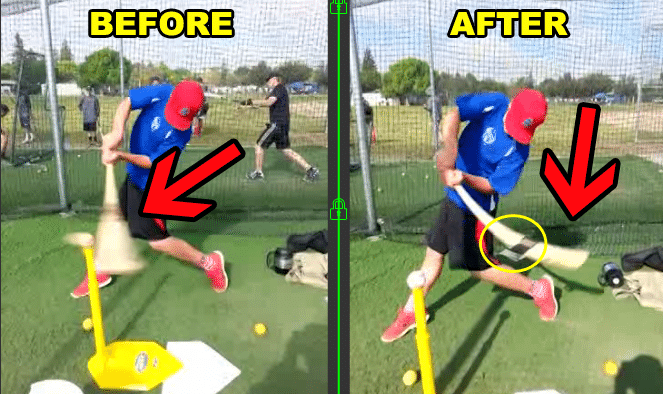
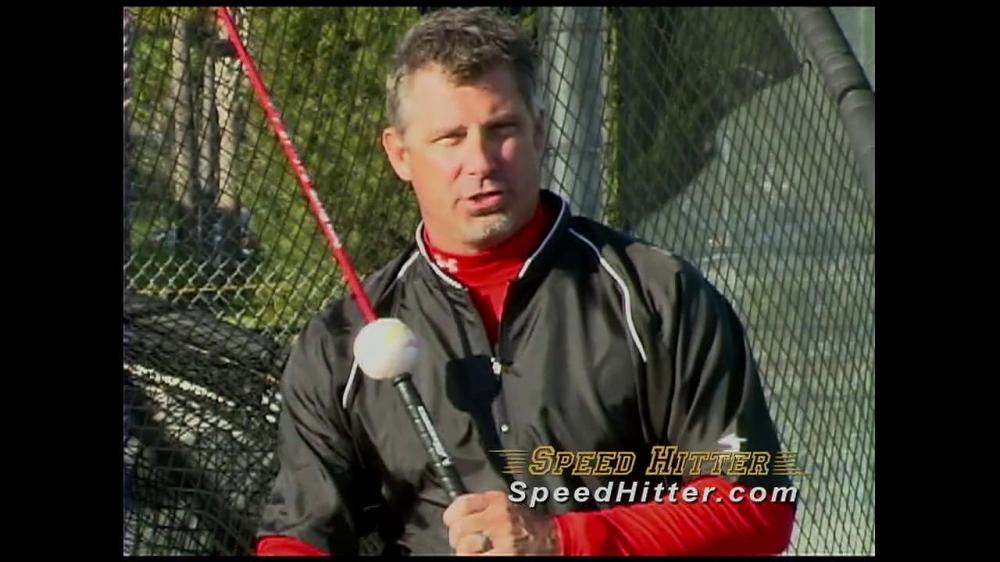
. Focus should be on hearing a clear audible “click” before impact, NOT at contact.

